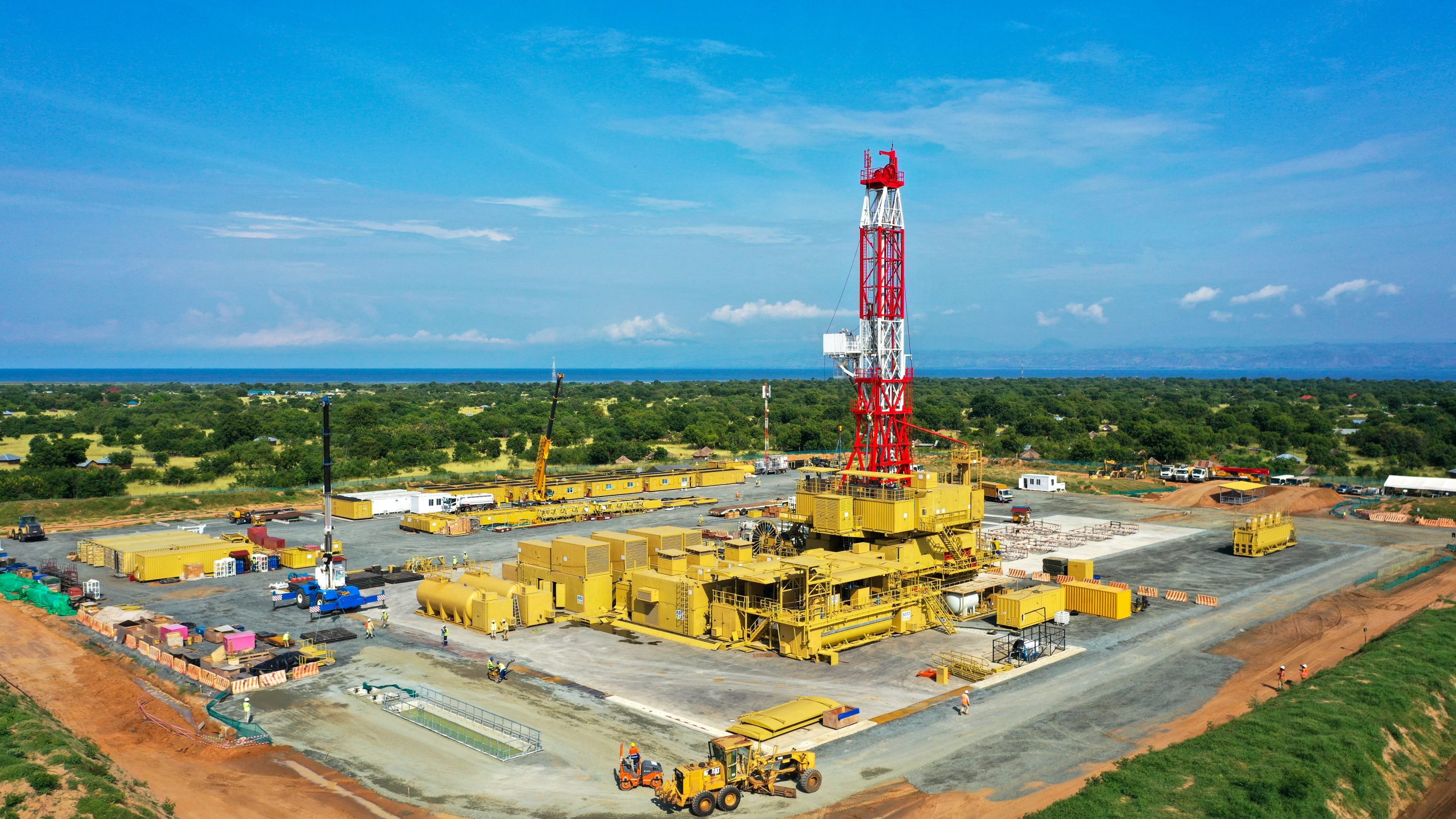
The unnecessary noise by self-appointed neo-colonial agents disguised as environmental activists will not deter us from developing our God-given resources that will spur the region out of energy poverty and reduce the pressure on our natural green cover as a source of energy. It should also not deter us from cherishing the cutting-edge technologies and opportunities being displayed in our midst.
As you descend the Kingfisher Road escarpment, nature grants you a free bird’s view of the Kingfisher Development Project (KDF), located at the Buhuka Flats, Kikuube District. What is very distinct though in this memorable view is the LR8001 rig, with its mast height (derrick) of 60.5m standing out of the crowd.
Transported in over 250 trucks by a Ugandan consortium of local logistics company (DDG), the LR8001 Kingfisher drilling rig arrived in Uganda in September 2022. It was assembled in eight weeks, tested, and was officially commissioned for work on 24th January 2024, when H.E Yoweri Kaguta Museveni, President of Uganda officially launched the spudding (start of drilling) operations for the Kingfisher oil field.
Uganda’s modern land drilling rigs
Unlike the ordinary exploration rigs that are manually operated, the four drilling land rigs that will be used are automated
These include CNOOC Uganda’s LR8001 rig in the Kingfisher project which can drill up to 8,000 metres. The other three are the SINOPEC 1501 (Rig 1), SINOPEC 1502 (Rig 2) and SINOPEC 1503 (Rig 3), which will be used in the Tilenga project under the operatorship of TotalEnergies. Whereas the LR8001 rig uses skidding to move, the rigs on the Tilenga project will walk from one well hole to another, hence the metaphor ”walking rigs”.
The old exploration rigs vs the new development rigs
The earliest land drilling rigs were constructed using wooden steel and basic mechanical components. These rudimentary rigs represented the first foray into drilling operations on land. They operated on manual labour and primitive mechanisms, relying on sheer human strength to accomplish drilling tasks. The process involved labourers manually rotating the drill string and utilising human or animal power to lift and lower equipment. It was a physically demanding and arduous endeavour that required immense effort and perseverance, with basic combustion engines that could not match modern drilling operations.
As a result of these limitations, early land rigs exhibited low drilling efficiency and had limited capabilities in terms of depth and complexity. They were unable to reach the depths that modern rigs can achieve, nor could they handle the intricacies of complex drilling operations. Nevertheless, these pioneering rigs played a vital role in spearheading oil and gas exploration, laying the groundwork for the industry’s future advancements. One such old rig has been donated to the Uganda Petroleum Institute-Kigumba (UPIK) for practical learning experience of the next-generation rigs.
Despite their shortcomings, the first land drilling rigs were instrumental in driving the industry forward. They served as a catalyst for innovation, inspiring engineers and inventors to push the boundaries of drilling technology. The challenges encountered during those early days sparked a relentless pursuit of improvement, ultimately leading to ground-breaking innovations in drilling rigs.
Over time, advancements in engineering, materials, and technology revolutionised land drilling rigs. Wooden structures gave way to steel and advanced alloys, providing increased durability and stability. Mechanical components were refined and precision-engineered, enhancing the efficiency and effectiveness of drilling operations.
Today’s land drilling rigs in Uganda stand as towering testaments to human ingenuity and technological progress. Equipped with cutting-edge technology, these rigs boast of automation systems, advanced computer software, and real-time monitoring capabilities. They can precisely analyse data, optimise drilling parameters, and ensure optimal performance throughout the drilling process.
One of the key features of the latest land drilling rigs in Uganda is their high-powered engines. Incorporating advanced internal combustion diesel engines, these rigs deliver superior drilling performance. The increased power output enables efficient penetration through challenging formations, accelerating drilling operations and reducing overall project timelines.
They boast of sophisticated hoisting systems capable of handling heavy loads with ease. These systems ensure smooth and secure lifting and lowering of drill strings, casings, and other equipment.
Environmental considerations play a pivotal role in the design and operation of new land rigs. Reduced emissions, efficient waste management, and eco-friendly practices are paramount. The rigs have been designed to minimise the environmental footprint by adopting sustainable technologies and practices, ensuring responsible resource extraction for future generations.
All development rigs in both the Kingfisher Development Area (KFDA) and the Tilenga Project are Automated and Soundproofed to meet the National Noise Emission Standards (Day- 60dB, Night – 40dB), hence the name ‘silent rigs.
With such technical advancements, we can comfortably say that Uganda is on track to sustainably exploit her oil resources to the chagrin of the economic saboteurs.
By Ali Ssekatawa, Director of Legal and Corporate Affairs at the Petroleum Authority of Uganda
#End
